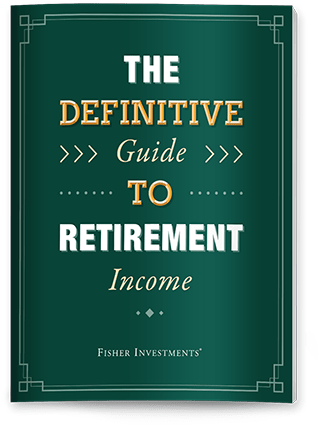Personal Wealth Management / In The News
Your Tariff-Free May Mailbag
Because everyone needs a break, right?
Ah, friends, the end of May! That magical time in the northern hemisphere when school years are winding down, summer is nigh, the best NBA and NHL teams are duking it out, baseball fans still have hope (well, some baseball fans) and fast cars are zipping around Monaco and Indianapolis. And a time for your friendly MarketMinder editors to pop open the mailbag and see what you fine folks are asking about that has nothing to do with tariffs. Tariffs matter, but we have covered those so much! And there is so much more to think about.
China and India are increasingly big global economic players. What do you think about this?
We think it is an interesting development and a timely reminder that the economy isn’t the stock market. The IMF estimates India’s nominal GDP at a shade below $4.2 trillion, the fourth-largest country.[i] But India’s market capitalization is only about $1.9 trillion, ranking it ninth in the MSCI All Country World Investible Market Index.[ii] China is #2 on the global GDP leaderboard, at $19.2 trillion, but its market cap is just $2.6 trillion, good for fourth in the world.[iii] Meanwhile, the IMF sees US GDP hitting $30.5 trillion this year, while its market cap is $57.0 trillion.[iv] Taiwan, Japan and Canada also punch well above their GDP in global markets.
The size of a country’s economy, in GDP terms, has little to nothing to do with its corporate landscape. In developing economies, which China and India are still considered, GDP can grow quickly alongside population growth and urbanization. That may represent a sizable increase in living standards, which is a great thing, but it doesn’t necessarily mean corporations are growing and generating returns hand over fist. It may mean a nation of small businesses and one or two giant companies, perhaps state-owned. It may mean a nation has a sizable stock market hampered by protectionism and unpredictable regulation. GDP alone won’t tell you anything. Now, both these economies are a source of global demand and production, which adds to overall economic activity—a positive. And to the extent their markets open more and more to trade and investment, that positive grows stronger.
How does the Fed monitor the economy? Aren’t they operating at a lag?
Fed officials do use all the same economic indicators we normal folks use, so yes, in that regard, they are operating at a lag. All data are backward-looking, telling us what already happened—not what is to come.
But Fed officials also use scuttlebutt, which is a little more current. That is, the regional Federal Reserve bank governors and their staff have contacts in the many industries across their district, whom they keep in regular contact with to see how business is going and what trends are developing. If you read Fed transcripts, you will see a lot of this. (And note: It doesn’t make them much better forecasters.) Like in 2008, when then-San Francisco Fed President Janet Yellen used country club memberships and demand for elective cosmetic surgery to support her view that the economy was overall fine. These transcripts come out at a five-year lag, but you can see the general summary in the Fed’s “Beige Book.” It still isn’t predictive, but it is a nice coincident companion to harder data.
Has the increase in options trading caused more volatility?
Nah. There are a lot of ways to measure volatility, but if you look at things like big daily moves, there isn’t a noteworthy increase over time. The 1920s and 1930s were pretty dang volatile.
As Ken Fisher wrote in his 2012 book, Markets Never Forget (But People Do)¸ options and futures can actually reduce volatility of the underlying asset. In the book, Ken cited vastly higher volatility for onions versus oil prices—orders of magnitude higher.[v] One key difference? The US government, in its infinite wisdom, banned onion futures in 1958.[vi] No futures. More volatility. And don’t think this is about differences between crops and oil: Corn has futures. And, since 2015, its monthly standard deviation (a measure of how much monthly returns skew from the period’s average) is 15.4%. Onions? 86.3%.[vii] Again: No futures. More volatility.
Options trading, in our view, helps mitigate volatility because it adds liquidity to the marketplace. By allowing more traders and investors to capitalize on their views, options (and futures) increase supply and demand for underlying shares (or commodities), meaning more shares change hands than there would otherwise be at a given time. That is liquidity! And it makes price discovery more efficient, narrowing bid/ask spreads and, therefore, implicit trading costs. Pretty cool.
Should I trim my stock holdings as the market goes up in order to have cash to invest after it has gone down?
No! Which we say without knowing your personal situation, time horizon, cash flow needs, long-term goals or overall comfort with volatility. But as a general matter of principle, we don’t think this tactic is beneficial. We get the allure—sell high, buy low! But market volatility is unpredictable, and there is too great a risk you sell low and buy higher. If your long-term goals require market-like returns, then you need to be in the market to capture those returns. Trying to get fancy with timing will likely work against you in the long run. It also limits the ability of compound growth to work for you. That is the most central and fundamental reason to harness the power of the stock market over time.
Why does everyone clap when the market opens and closes?
Fun as it would be if it were a heartfelt cheer for capitalism, the good folks on the floor are generally clapping for the lucky ducks who get to ring the opening and closing bell, which is a really cool thing to do. Even at the end of a very bad day, ringing the bell is a huge honor and privilege for those selected, who are usually celebrating something big. An IPO, maybe. A merger, maybe. Winning a big game, perhaps. Something like that. It is one of the most wholesome, happy things in finance.
[i] Source: IMF, as of 5/21/2025.
[ii] Source: FactSet, as of 5/21/2025.
[iii] Source: IMF and FactSet, as of 5/21/2025.
[iv] Ibid.
[v] Markets Never Forget (But People Do), Ken Fisher and Lara Hoffmans, Wiley, 2012. Pages 63 – 64.
[vi] Source: “History of the CFTC: US Futures Trading and Regulation Before the Creation of the CFTC,” Commodity Futures Trading Commission, accessed 5/21/2025.
[vii] Source: Finaeon, Inc., as of 5/21/2025. Corn and onions, average price to farmers, 12/31/2014 – 3/31/2025.
If you would like to contact the editors responsible for this article, please message MarketMinder directly.
*The content contained in this article represents only the opinions and viewpoints of the Fisher Investments editorial staff.
Get a weekly roundup of our market insights
Sign up for our weekly e-mail newsletter.

See Our Investment Guides
The world of investing can seem like a giant maze. Fisher Investments has developed several informational and educational guides tackling a variety of investing topics.





